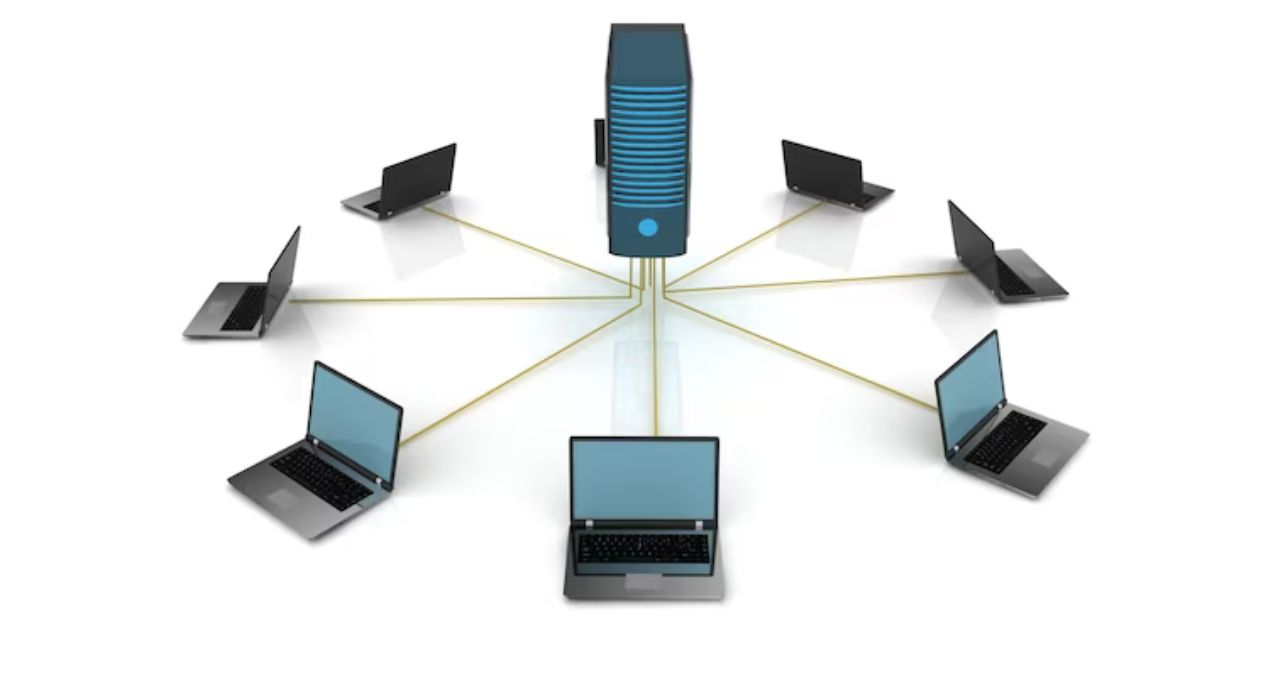Traditional WAN and SD-WAN are two terms that are becoming increasingly popular in the technology world. And with the ever-increasing demand for bandwidth, many companies are looking for an alternative to the “old-fashioned” WAN.
But what is each of them? What are the differences? In this article, we will clarify doubts about these two solutions and tell you when you should opt for them.
Table of Contents
What is a wide area network or WAN?
A wide area network, or WAN, is a computer network that covers a larger geographic area than usual, interconnecting various types of local and/or regional networks. Sometimes, they can even connect different countries or even continents.
Generally, WAN networks are used to connect other more local networks, such as LANs. The latter is a group of computers and online devices located in the same geographical location, generally within the same building.
WAN networks are usually used strictly within the professional field. Some of its main features are the following:
Interconnection of LANs: as we have mentioned, the main objective of this type of network is to interconnect different LANs. Thanks to this, end users have access to the applications and services of their local network and to all the resources of the other connected LANs.
Data transfer: WANs allow the sending and receiving of data over long distances. In this way, communication between different headquarters of the same company, for example, achieves greater efficiency.
Connectivity: WAN networks are designed to offer good connectivity, even in areas with limited broadband availability.
Scalability: WANs are scalable; that is, they can quickly adapt to changes in data traffic. This is very important for businesses that need a network that can adapt to their growing bandwidth needs.
What is SD-WAN?
On the other hand, SD-WAN or software-defined networking for wide area networks is a technology that simplifies and improves the management of WAN networks.
As its name suggests, SD-WAN is based on “software-defined networking.” All network functions (control, management, etc.) are carried out through software, greatly facilitating and simplifying its configuration and administration.
SD-WAN is quickly becoming a very popular solution to traditional WAN networks’ performance and scalability issues. This is because it offers many advantages, such as:
Better performance: SD-WAN allows you to optimize bandwidth and thus improve network performance.
Lower costs: By simplifying network management, SD-WAN allows you to reduce the costs associated with its administration.
Greater flexibility: SD-WAN offers great flexibility when configuring the network, which greatly facilitates its adaptation to the changing needs of companies.
Greater security: SD-WAN allows greater security in the network since all functions are carried out through software.
Traditional WAN vs SD-WAN: what are the differences?
Although they are often talked about as totally different solutions, when talking about traditional WAN vs SD-WAN, we are comparing two types of wide-area networks.
As we have seen, wide area networks (WAN) connect different locations: offices, stores, or data centers. Instead, a software-defined wide area network (SD-WAN) is simply a new way of implementing a WAN.
SD-WAN technology simplifies network configuration and control to enable faster, more reliable connectivity. Unlike traditional WANs, which require expensive, proprietary equipment, SD-WANs can use a variety of commercial off-the-shelf routers and switches. This makes SD-WAN more economical and flexible to deploy and scale.
Another important advantage of SD-WANs is that they use a simpler architecture that allows data to be transferred more efficiently. Finally, there are also fewer points of failure in SD-WANs due to their distributed design, so service interruptions are less frequent.
Cost comparison between WAN and SD-WAN
Generally speaking, SD-WAN technology is more efficient and cost-effective than WAN, enabling better use of bandwidth and reducing costs associated with equipment and management.
However, it is only sometimes the best option, even if we focus solely on price, as it can be more complicated to configure and manage. Ultimately, choosing the right technology will depend on the size and complexity of the network, as well as the specific needs of the business.
Who is SD-WAN interesting for?
SD-WAN is primarily designed to be used by businesses and organizations that need a more efficient, flexible, and secure WAN network.
However, there are better solutions than SD-WAN for all cases. Specifically, it is not recommended for companies with relatively simple or small WAN networks. This is because SD-WAN can be overly complex and unnecessarily expensive for this type of network.
On the other hand, SD-WAN is an exciting solution for those companies that need greater efficiency, flexibility, and security in their WAN networks.
Which is better? The traditional WAN or the SD-WAN?
The answer to this question depends on many factors, such as the size and complexity of the network, data traffic, and each company’s budget.
Overall, SD-WAN networks offer improved performance and greater flexibility at a lower cost than traditional WANs. However, there is only one universal best approach for all organizations.
When considering WAN or SD-WAN for your business, it is essential to evaluate your specific needs to determine which option is best for you. SD-WAN networks are rapidly gaining ground due to their many advantages, but there are still some cases where traditional WAN networks are the best option.
This is because SD-WAN still has some limitations, such as:
Increased complexity: SD-WAN is a relatively new technology and has yet to fully mature. This makes their management and configuration more complex than traditional WAN networks.
Requires a greater investment: in some cases, the SD-WAN requires a higher initial investment than traditional WAN networks since more sophisticated equipment is needed.
Technology change: as always happens when a new technology is being adopted, starting to use SD-WAN can be complicated for companies configuring their networks in the traditional way for some time.
In conclusion, the traditional WAN remains a widely used and effective solution for many networks. However, SD-WAN is quickly gaining ground, and it may be interesting for many companies to make the necessary investment to use this new tool.
Also Read : How Do I Know What My IP Is According To My Operating System?




